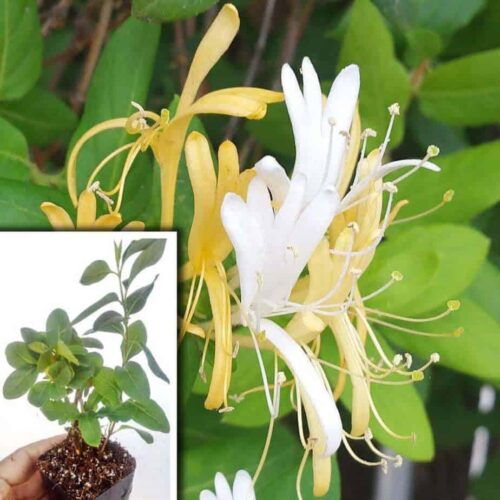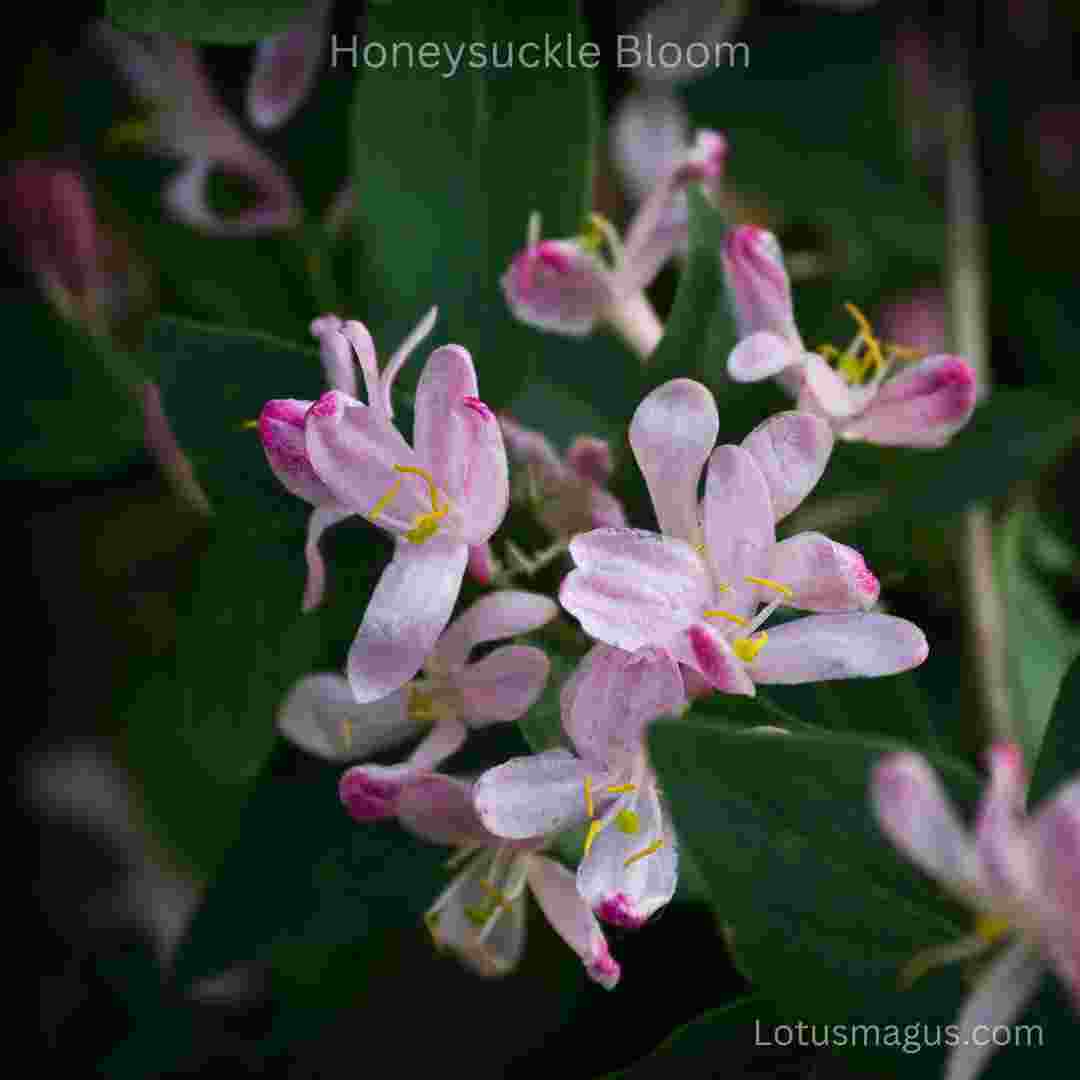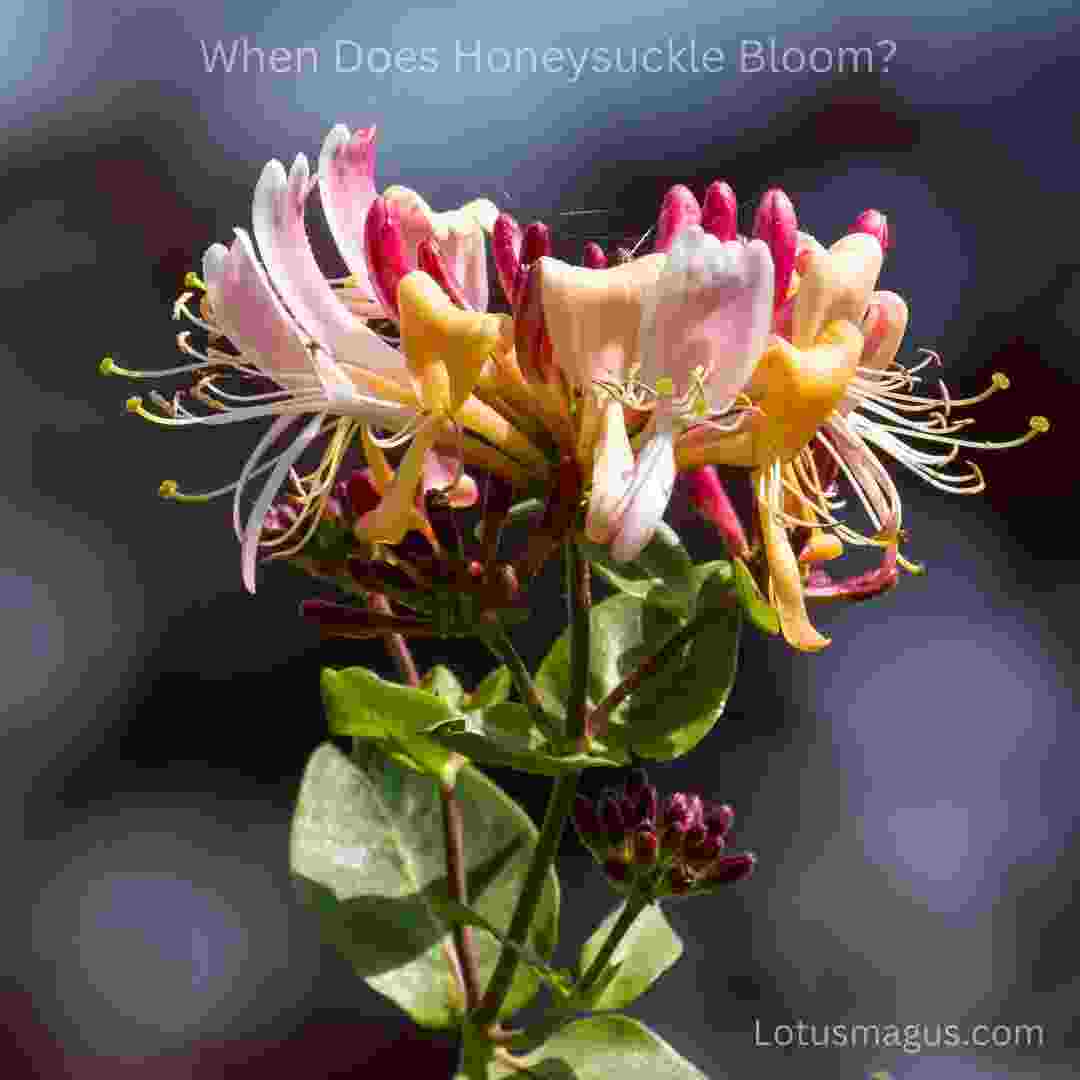Honeysuckle is a shrub plant which is very recognizable and has a lovely smell that’s why even it attacks many nearby butterflies. It is deciduous because you will find it dropping leaves but even though it’s also considered in the evergreen category. Many Dog owners are curious to know whether these honeysuckle poisonous to dogs and some ask about it they are really invasive in nature so Read on.
Is honeysuckle poisonous to dogs?
Yes, honeysuckle is poisonous to dogs, causing gastrointestinal distress. Every part of the honeysuckle plant, from vine to flower, bears toxic properties that dogs cannot digest properly.
Using herbicide can prevent the growth of honeysuckles and you should train dogs so when you grow honeysuckle your dog won’t do anything to the vine. If that happens kindly call for pet care center for immediate help. The berries are used as an edible food source for bears, mammals and even some variety of birds. The ASPCA did not have this plant in there list that what makes many confused with the toxicity of honeysuckle.
As per IN.GOV, honeysuckle are invasive because once they start to grow it will not stop until the whole forest land is covered by these shrub leaves. It means no food source left for birds and animals to eat. They even have chemicals which will largely affect the soil, that means all growing plants in the area where honeysuckles grow get poisoned.
These plants greatly tolerate hot sun and grow in any landscapes. It has sweet nectar and leaves on this shrub grow opposite of each other over the stem. The White Variety is mostly popular and it is the one that draws the attention of people , this also has colors like yellow and deep orange.
Honeysuckles has almost 170-180 species and is mostly found and native to Eurasia and North America and do you know one of its varieties called Lonicera japonica is considered as invasive in many developed countries like North America, South America , Australia and Europe.
It comes from the family called Caprifoliaceae which is of climbers and ornamental shrubs. These are also grown in the Southern Asia and North African Region & the majority of them are available and cultivated in china. These have very Stunning looking flower and can be grown in most garden soil. Its flower is useful for butterflies and hummingbirds for nectar.
Honeysuckle is bitter in taste and used as dye in some regions. There are many medicinal uses for this plant which includes body cleansing, wounds, burns,sore eyes, dandruff,infectious,arthritis , coughs, pain of feet etc.
It is termed as Invasive in Northern and Central parts of INDIANA. The List also includes South Tennessee, Central Great plains, North Caroline and Southern New England. These are also moved below the soil and can even dominate the whole forest land.
Is honeysuckle poisonous to dogs?
Yes, honeysuckle is poisonous to dogs, causing gastrointestinal distress. Every part of the honeysuckle plant, from vine to flower, bears toxic properties that dogs cannot digest properly.
Using herbicide can prevent the growth of honeysuckles and you should train dogs so when you grow honeysuckle your dog won’t do anything to the vine. If that happens kindly call for pet care center for immediate help. The berries are used as an edible food source for bears, mammals and even some variety of birds. The ASPCA did not have this plant in there list that what makes many confused with the toxicity of honeysuckle.
Is Bush Honeysuckle Toxic to Dogs?
Yes, bush honeysuckle is indeed considered toxic to dogs. Lonicera maackii, commonly known as bush honeysuckle, ain’t a friend to our canine pals. Inside those green leaves and vibrant blooms lurk chemicals that can bring a dog to its knees. When a dog dines on this invasive guest, it stirs up a nasty pot of stomach troubles and more severe symptoms, depending on the quantity nibbled and the toxins in the plant. Best keep your loyal hounds far from this treacherous green, for their well-being’s sake.
Is Coral Honeysuckle Poisonous to Dogs?
Coral honeysuckle (Lonicera sempervirens) is generally regarded as having low toxicity to dogs. It’s low on the toxicity scale. A taste of this honeysuckle might stir a dog’s gut, causing a bit of queasiness, with the usual suspects: vomiting, diarrhea, and a touch of lethargy. But most canines bounce back without much fuss. Nonetheless, don’t let your guard down, watch your pups, for what goes down easy for one may not for another. Always wise to err on the side of caution.
Is Japanese Honeysuckle Poisonous to Dogs?
The toxicity of Japanese honeysuckle to dogs is regrettably is not clear. The documents at hand don’t spill the beans on whether Lonicera japonica is a poisonous or not to our canine pals. While some honeysuckles may have a gentle touch, it’s best not to take chances. Seek counsel from the learned folks or your trusted vet to ensure your cherished pets tread on safe ground. In the garden of uncertainty, a prudent gardener always keeps a watchful eye on the furry souls that roam.
Also Read :Learn the Types of Honeysuckle ?

Buy Now
Can dogs safely eat honeysuckle flowers?
The dog mistakenly eaten honeysuckle flowers may lead to an upset stomach and with the usual symptoms such as vomiting and diarrhea making an appearance. Dogs, much like ourselves, may be tempted by the enchanting aroma of honeysuckle flowers. But, alas, it’s a temptation we must resist for our furry friends, for these blossoms are not a suitable treat for them.
Are all varieties of honeysuckle toxic to dogs?
In the world of honeysuckle, every species, whether enchanting or not, shares a common trait – toxicity to dogs. This perilous quality arises from compounds present throughout the plant. So, if you have this charming creeper in your garden and your heart belongs to a dog, caution is advised.

Lonicera nitida ‘Baggesen’s Gold’
It is one of the top when it comes to beauty and this one is also popular because of its versatility and adaptability. Its leaves are in golden green color forming straight branches and if you add it to your garden, this will add more attractiveness.
The color of its flower bloom is white and this shrub grows about 1-2 m tall.
Lonicera periclymenum ‘Graham Thomas’
It is also a good fragrance and it also attracts hummingbirds with its white flower that turns yellow in the month of July to sept. This will grow red color berries at the end of the summer. This shrub has a height of 5 m
and it is a Deciduous climber honeysuckle.
Lonicera x tellmanniana
It is a one of the favorites of those who like colorful flowers like orange and yellow. The flower bloom will be shown in the month of may till July. This one is also a Deciduous Climber and having a height of 4-5 m ,
I have talked to many people. This one has very powerful fragrance in a good way I mean.
Lonicera ‘Mandarin’
It is a flowering shrub that shows orange flowers in the months of July to September. This variety has no fragrance and if you are allergic to flower scent then you should go with this.
Lonicera fragrantissima
It is one of the honeysuckle popular to be grown in the winter season , and this deciduous meaning it will drop leaves often the whole year. It is about 1-2 m tall in height and it grows and shows blooms
in January to march with beautiful white color flowers.
Lonicera periclymenum ‘Serotina’
It is a flowering shrub which blooms in the month of July to September , most honeysuckle bloom this time and it has white flowers , this will cover your wall or garden faster. Most people grow this with roses as this one suits with red flowering plants.
What are the symptoms of honeysuckle poisoning in dogs?
The symptoms of honeysuckle poisoning in dogs are not pleasant. Vomiting and diarrhea are the main signs in this problem, accompanied by a general sense of fatigue. While the life of your loyal friend may not be in immediate danger, they will certainly be discomforted.
Are there any parts of the honeysuckle plant that are safe for dogs?
Unfortunately, when it comes to honeysuckle, no part of the plant is safe for dogs. From the vines that cling to fences to the alluring flowers and tempting berries, all contain toxic compounds that can wreak havoc on your furry companion’s health.
Is it safe to have honeysuckle growing in a yard with dogs?
No, it is not safe for your dogs and you should avoid planting honeysuckle in your yard. The allure of the plant’s beauty may be strong, but the risk it poses to your pets is not worth the aesthetic appeal. There are other dog-friendly options for your garden that can provide both safety and elegance.
What should I do if my dog eats honeysuckle?
If you find your dog munching on honeysuckle, do not panic. Here are some steps to follow:
- Contact your veterinarian: Swiftly seek professional guidance. They are the true experts.
- Keep a watchful eye: Observe your canine companion for symptoms of poisoning.
- Don’t make them vomit: Refrain from inducing vomiting unless instructed by your veterinarian, as it may worsen the situation.
- Provide water: Ensure your dog has access to clean water to stay hydrated.
- Collect a sample: If possible, bring a sample of the plant your dog ingested to your vet. It can be a valuable clue in the diagnostic puzzle.
Are there any home remedies for treating honeysuckle poisoning in dogs?
In cases of poisoning, it’s always safest to consult a professional. There are no safe and reliable home remedies for treating honeysuckle poisoning in dogs.
How long does it take for honeysuckle poisoning symptoms to appear in dogs?
The onset of symptoms following honeysuckle ingestion can be swift, typically within a few hours. So, if you suspect your dog has had an unauthorized nibble on honeysuckle, keep a close watch for any signs of distress.
Are there any alternative plants I can use instead of honeysuckle that are safe for dogs?
Yes, indeed, there are alternatives to honeysuckle that are friendly to your canine companions. Here are a few suggestions:
- Lavender: Its soothing fragrance will charm you and your dogs alike.
- Sunflowers: These towering beauties can add a touch of sunshine to your garden.
- Roses: Classic, elegant, and safe for your four-legged friends.
- Marigolds: A splash of color that won’t harm your loyal pals.
- Blueberry bushes: They bear both fruit and charm, making them a delightful choice.
Honeysuckle Poisoning in Dogs

It is important to keep in mind that honeysuckle is poisonous to dogs, so if you have a dog and you see this plant blooming around your yard, make sure you keep your dog away from it. Honeysuckle can cause kidney failure, liver failure, and even death for your dog.
Symptoms of Honeysuckle Poisoning

Honeysuckle poisoning is a serious condition that can cause a wide range of symptoms, including:
- Nausea
- Vomiting
- Seizures
- Dizziness
- Weakness
- Confusion
- Loss of balance
- Severe abdominal pain
- Mood changes
How to Remove Honeysuckle from Your Garden

Honeysuckle is a pretty plant, but it is also invasive and difficult to remove from your garden. There are two main ways to remove honeysuckle from your garden: cutting the plant down or using herbicides. Cutting the plant down is an option if you have time. If you don’t, you can use herbicides. Herbicides will kill the plant, but they will also kill other grass in the area. Here is the herbicide I recommend – Click here.
There are other ways you can remove honeysuckle from your garden without harming the plant if you want to keep it. One way is to use a sharp knife to cut the honeysuckle away from the ground. Another way is to dig up the roots and place them in a bucket of water. You can also just pull the leaves off of the plant and not worry about damaging the plant. It may take a few days or weeks, but your garden will be back to normal after you get rid of the honeysuckle.
Honeysuckle Facts
- Honeysuckle flowers can be found in gardens, parks, and yards in North America.
- They are also one of the most common species of flowers to be found in the United States.
- The flowers are a white color and have a sweet fragrance. The leaves of the honeysuckle are an emerald green color and have a slightly rough feel.
- The stems of the honeysuckle flower are long and thin, with few leaves on them.
- The blooms of the honeysuckle flower can be up to two inches wide and are often spotted in clusters.

If you want I should write Its Full growing and caring method please give me a email. I will write experience .
Also See:
Bladderwort(Utricularia) – Uses, Life Cycle,Habitat, Adaptations
Ponytail palm Care – Propagation, Problems, brown tips , Pruning
Is Plumbago Poisonous to Humans – (With Full Details)
Spider Plants Care – Propagation, Pruning [Beginner to Advanced Guide]
